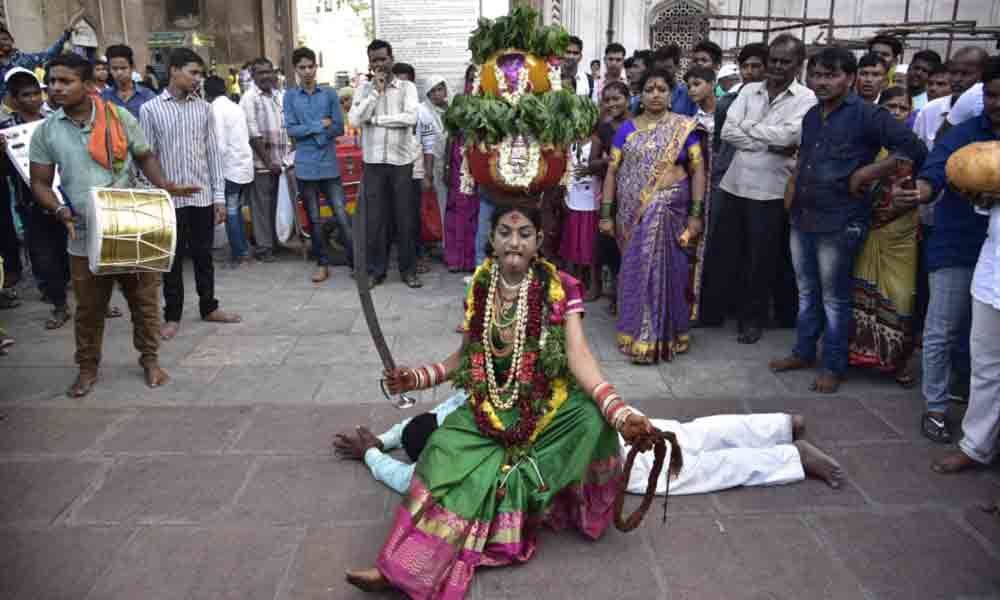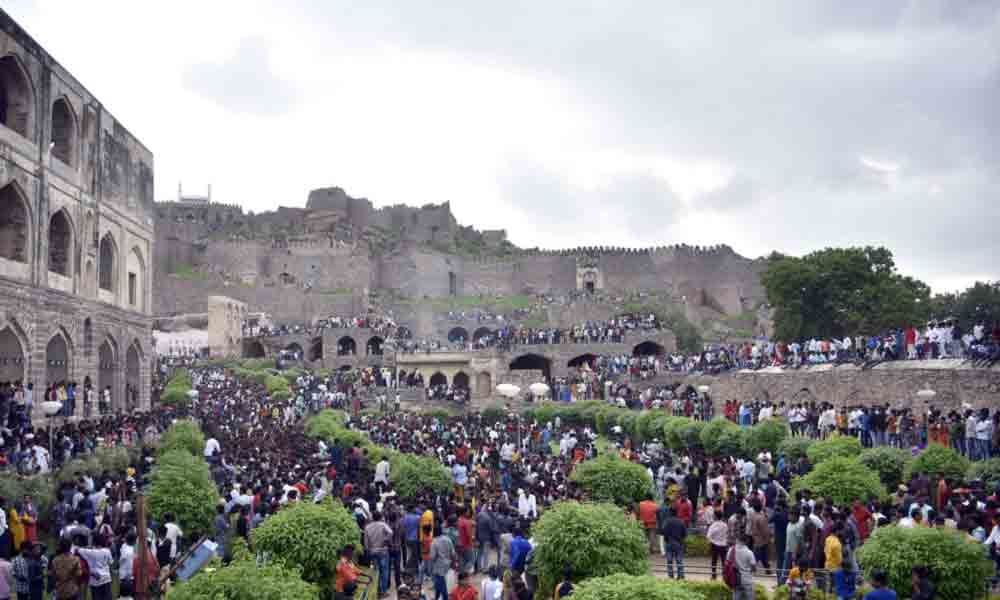The colours of life
A testimony to our culture, rich, and vibrant festivals for every season and reason fill the air with both gaiety and piety and forge close bonds between communities.
A testimony to our culture, rich, and vibrant festivals for every season and reason fill the air with both gaiety and piety and forge close bonds between communities. Apart from the many festivals based on myth, folklore and legend celebrated with the rest of India, Telangana is the cradle of two important festivals that are unique to it – Bathukamma and Bonalu in which it is women, who celebrate with fervour as well as worship the feminine form of divinity, the goddess or shakti. Falling in the second half of the year these festivals have distinct ways of celebration ushering in good tidings and bonhomie among family and friends. Song dance, prayer and sumptuous offerings of food mark 'Bonalu' derived from 'Bhojanam' (food) ushering in the colourful 'Bonalu Festival' in the month of Ashadam (July) where monsoon showers greet the earth. Every aspect of this festival is colourful and larger than life, with the naivedyam or offering to the goddess drawing special attention. Rice is cooked with milk and jaggery and carried in earthen or brass pots adorned with neem leaves and turmeric and a lighted lamp. Placed atop their heads, these pots are carried by women dressed in colourful and resplendent silks in a procession to the temple. Sarees, bangles, turmeric and vermilion are also part of the offering presented after much singing and dancing by a large crowd of devotees who are part of the procession.
The book 'Bonalu Mahankali Jatara' edited by B Narsing Rao and published by the Sahitya Kala Vedika with 129 images and text traces the roots of Bonalu to the pre-historic period where worship of the mother goddess was in vogue. This practice continued unhindered over time in the rural milieu as well as the developing towns and cities defining the culture and tradition of its people. Palkurki Somanatha's 'Panditharadhya Charitra' and 'Basava Puranam' are said to mention Bonalu festivities indicating that this existed prominently in the 12th century as does the mention in Jayapa Senani's 'Nrityaratnavali' written during the reign of the Kakatiya kings. 'Grama Devathas' or village goddesses were worshipped all over Telangana as deities that protected the village and were a part of all rituals and events here. Birth, death, disease, drought and everything good or bad was attributed to the power of goddesses who were propitiated and offered animal sacrifices and intoxicating drinks as per their beliefs. Maisamma was the goddess of animals, Balamma took care of children and Katta Maisamma took care of rivers, streams and water bodies. "Although animal sacrifices were toned down with time, goddess worship including the one undertaken during the Mahankali jatara reveal that over the ages shakti worship and the status of women who are capable of procreation has been of paramount importance in our society," adds Mamidi Harikrishna, director language and culture, government of Telangana.
Beginning on the premises of Golconda every year where the goddess Jagadamba resides in a temple built 800 years ago, the procession here is a dazzling parade of Shakti incarnations. The idol is said to have been discovered by a shepherd and the Kakatiya rulers built a mud temple for the goddess which remained intact through various invasions. The belief that various goddesses are responsible for the outbreak of infectious diseases was widespread in Telangana's villages and many times they bordered on superstition. Interesting details of how villagers who spotted mushroom growth in the vicinity of their houses attributed it to the ire of the 'grama-devatha' and resorted to animal sacrifice as appeasement is seen in Ampasayya Naveen's Sahitya Akademi winning novel 'Kalarekhalu'. Implicit faith in the goddess led to offerings considered as 'thanksgiving' and 'Bonalu' represents this feeling of gratitude at its best.
When the plague broke out in the twin cities of Hyderabad and Secunderabad in 1813 thousands of lives were lost. A military battalion from this region posted in Ujjain heard of this and prayed to the goddess in the Ujjaini-Mahakaal temple according to legend. The soldiers took a vow that they would install an idol of the goddess if the disease was brought under control. Once all traces of the disease were eliminated the idol installation took place and the Bonalu tradition began in earnest. The mythological version relates to the time when the mother goddess visits her parental home (puttillu) and is treated with the love that a daughter visiting her parents after marriage receives. Celebrations take place every Sunday in the various temples of the goddess each week beginning with the first Sunday of Ashadam extending to the whole month making it a very auspicious period filled with song and prayer.
Women said to be possessed by the spirit of the goddess in a state of trance dancing to the rhythmic beat of drums, their hair left loose and faces anointed with turmeric and vermilion who are pacified by pouring water over their feet every now and then are a common sight here. The Pothuraju a well built and bare-bodied man brandishing a thick rope that he lashes himself with as he heads the procession as protector is ironically the only patriarchal element in the festivity dominated by women. 'Thottela' or a colourful stick, ghatam or copper pot decorated as the mother goddess and carried by a priest and the rangam or the performing oracle who stands atop a pot and foretells predictions for the year are all part of the carnival attended by a sea of humanity.
Bonalu is a festival with deep roots based on immense faith and devotion. Songs like 'Mayadari Maisammo' and 'Kodibaye Lachammadi' are filled with energy and sung with gusto at several events and not just at the jatara although they were written intrinsically for a crowd that loses itself in celebration. A festival where myth, legend, faith and devotion coalesce, 'Bonalu' reflects the spirit of a people who believe in the rhythm of life. The drumbeats and dancing, the optimism generated by predictions of bounty and the frenzy built up through milling crowds united by faith make it an unforgettable experience.
























